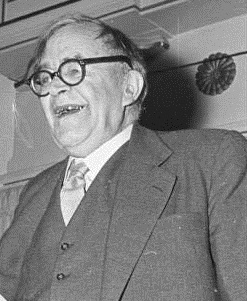The twentieth century saw the birth of a number of new theological movements within the church. The most powerful of these movements was postliberalism, a largely American movement[1] whose ideas are based squarely on the writings of the Swiss theologian Karl Barth (1886-1968). One of the first orders of business in just about any new theological movement is to find a way to say that the movement is not really new, but that it represents a return to a sunnier past. And so it has been for postliberals: to give the appearance that it answers responsibly to the New Testament’s understanding of theological commonplaces, rather than to some modern theologian’s formulation, postliberalism developed one of the most polished rhetorics ever to grace theological discourse, a rhetoric appealing to a wide set of common religious sentiments. In what follows, I will briefly discuss one rhetorical device that has played an important role within postliberal writings: the idea that any appeal to the canons of logical necessity and/or conceptual consistency is in itself a defection to “another” foundation, that is, to a foundation set up in opposition to the role of Jesus Christ as the “church’s one foundation.”[2] In other words, postliberalism uses the language of “Christ as foundation” (see Rom. 15:20; 1 Cor. 3:11; 2 Tim. 2:19[3] as a warrant for conceiving of theology as having a rationality all its own, free from the logical necessities that plague all the sublunary fields of thought. Parallel to this idea, and drawing support from it, is postliberalism’s insistence that the Scriptures “belong” to the church, in the sense that the church’s work of interpreting Scripture actually determines what the Scriptures mean (so that Scriptures’ true meaning is a private meaning, belonging to the church). Bound up within this conceit is the idea that the reader is not supposed to read the Bible for the purpose of gaining access to the events it refers to, but that religious meaning is stored up within the text quite apart from its work of referring. In postliberal rhetoric, this means that one is supposed to look strictly at the narrative, rather than “behind the text.”

A moment’s reflection on the New Testament’s mode of reasoning should suggest that this use of “foundation” is probably some sort of rhetorical trap. Don’t the New Testament writers themselves employ the normal canons of logical necessity? And doesn’t the New Testament tacitly insist on conceptual consistency (and the consequentiality of the historical referents behind Scripture) when it holds up the actual, bodily reality of Christ’s resurrection as the sine qua non of the believer’s hope (1 Cor. 15)?[4] Any attempt to dissolve conceptual consistency would rob the force of Paul’s reasoning. Postliberals, in fact, are exalting Christ and his theological role in a way that appeals to religious sentiments, but in a way not at all in line with the New Testament. As Richard Muller explains, “We can distinguish…between the soteriological Christocentrism that belongs to any genuinely Christian body of doctrine and the principial Christocentrism that belongs to several nineteenth-century developments of the so-called ‘mediating theology’ and to Karl Barth.”[5] At any rate, a quick look at the New Testament’s use of the foundation image shows that it serves a different purpose from what postliberals seem to think.
Paid Content
Premium Members and Friends of JP must be logged in to access this content: Login
If you do not have a paid subscription, please consider registering as a Premium Member starting at $10/month (paid monthly) or only $5/month (paid annually): Register
One Time Purchase Rather Than Membership
Rather than purchasing a membership subscription, you may purchase access to this single page for $1.99 USD. To purchase access we strongly encourage users to first register for a free account with JP (Register), which will make the process of accessing your purchase much simpler. Once you have registered you may login and purchase access to this page at this link:
- [1] It is revealing that prominent North American faculties that warmly embrace postliberalism (e.g., Duke, Princeton, Yale) hire their New Testament instructors almost exclusively from North American ranks, while those that have been more resistant to this way of thinking (e.g., Harvard, Chicago) hire their senior New Testament professors almost exclusively from Europe. ↩
- [2] This charge is explicitly made in Stanley Hauerwas, “The Church’s One Foundation is Jesus Christ Her Lord; Or, In a World Without Foundations: All We Have is the Church,” in: Stanley Hauerwas, Nancey Murphy, and Mark Nation (eds.), Theology Without Foundations: Religious Practice and the Future of Theological Truth (Nashville: Abingdon, 1994), 143-62. ↩
- [3] See Joachim Jeremias, art. “γωνία, κτλ.,” Theological Dictionary of the New Testament (Grand Rapids: Eerdmans, 1964), 1:791-93. ↩
- [4] This is all argued clearly and forcefully in Paul J. Achtemeier, “Is the New Quest Docetic?” Theology Today 19 (1962): 355-68 (available online at http://theologytoday.ptsem.edu/oct1962/v19-3-article3.htm). ↩
- [5] Richard A. Muller, “The Barth Legacy: New Athanasius or Origen Redivivus? A Response to T. F. Torrance,” The Thomist 54 (1990): 673-704, esp. 685. (Note: “principial” is not misspelled.) ↩






























































































